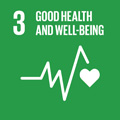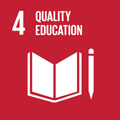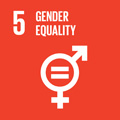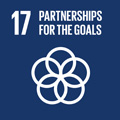- Docente: Bianca Maria Piraccini
- Credits: 1
- SSD: MED/35
- Language: Italian
- Teaching Mode: Traditional lectures
- Campus: Bologna
- Corso: Single cycle degree programme (LMCU) in Medicine and Surgery (cod. 8415)
-
from Oct 22, 2024 to Dec 05, 2024
Learning outcomes
The course aims to introduce students to the main clinical-pathological entities related to benign and precancerous tumors.
Course contents
The course aims to introduce students to the main clinical and pathological entities related to benign and precancerous tumours. 1) Introduction to skin tumours.
2) Epidemiology and risk factors.
3) Physiopathology of skin tumours:
- Mechanisms of skin carcinogenesis.
- Genetics of skin tumours..
- Role of the immune system in skin tumours.
4) Classification and diagnosis of skin tumours:. - Melanomas: subtypes, clinical characteristics and dermatoscopic.. - Skin carcinomas (basal and spinocellular): clinical characteristics and diagnosis.. - Rare skin tumors and precancerous lesions: actinic keratosis, cutaneous sarcomas, etc.
5) Treatment of skin tumors:. - Surgical options: excision, Mohs surgery, curettage, cryotherapy.. - Pharmacological therapies: chemotherapy, target therapies, immunotherapy.. - Radiotherapy and other physical therapies.. At the end of the course will be assessed.
knowledge and ability to understand applied, autonomy of judgment, communicative skills, ability to learn.
Knowledge.
- Skin cancer pathophysiology: Understanding of the molecular and cellular mechanisms leading to skin cancer development, with particular emphasis on genetic, environmental and immunological factors.
- Classification of skin tumors: Knowledge of the main types of skin tumors, such as melanoma, basal cell and squamous cell carcinomas, and other less common skin neoplasms..
- Differential diagnosis: Ability to identify and differentiate between various benign and malignant skin lesions, using advanced diagnostic techniques such as dermatoscopy and skin biopsy..
-Treatments and clinical management: Knowledge of available therapeutic options, including surgical treatments, radiotherapy, chemotherapy, targeted therapies and immunotherapies.
Ability:
- Clinical assessment: Ability to conduct a complete and accurate clinical examination of the skin, recognizing the signs and symptoms characteristic of different skin tumors.
- Interpretation of diagnostic results: Ability to interpret the results of diagnostic investigations and integrate them into the clinical context to formulate an accurate diagnosis.
- Treatment planning: Ability to design personalized treatment plans based on updated guidelines and adapted to the specific needs of the patient.
Readings/Bibliography
1) Saurat, Jean-Hilaire, Dan Lipsker, and Luc Thomas. Dermatologia e malattie sessualmente trasmesse. Edited by P. Calzavara Pinton. 6th ed. Malattie infettive. Milan: Edra, 2018.
2) Bolognia, Jean, Julie V. Schaffer, and Lorenzo Cerroni. Dermatology. 5th ed. 2 vols. Elsevier, 2024. ISBN 9780702082252.
3) Wolff, Klaus, Richard A. Johnson, Arturo P. Saavedra, and Ellen K. Roh. Fitzpatrick Manuale ed Atlante di Dermatologia Clinica.
Teaching methods
lessons
Assessment methods
interview
Teaching tools
Teaching methods
Theoretical lessons will be conducted in a classroom equipped with multimedia equipment, with the main use of slides in PowerPoint format. Students will be provided with an electronic version of the slides presented during the lessons.
Office hours
See the website of Bianca Maria Piraccini
SDGs




This teaching activity contributes to the achievement of the Sustainable Development Goals of the UN 2030 Agenda.
